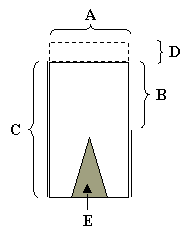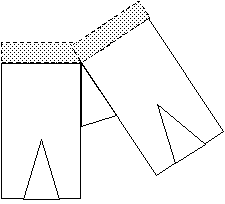|
|
|
These are conjectural braies for which I have no evidence. I often wondered why some braies from the early 14th century were depicted with inverted V-shaped cuts along the bottom of each leg. I thought this was simply artistic license intended to depict a ragged/impoverished state. That still remains the most likely explanation in my mind (particularly when the cuts are along the back of the leg). Another possible explanation is that these are where material for gussets was removed. The gussets could then be used in the crotch. Since hose are depicted as being tied to the body along the top of the thigh, the missing material on the braies would be covered by the hose. This design has the advantage of having absolutely no wasted cloth.
I intend to wear these braies using a belt to hold them up. Evidence suggests that a thin belt or piece of rope would be used. I intend to use a fairly broad belt (one and one-half to two inches in width) for the sake of comfort. I will make a slit (from top to bottom) in the material depicted in area D to allow the points attached to the hose access to the belt underneath.
In the pattern illustration the double lines represent seams. The seam in measurement C could also be a fold.
I was going for a 1350-1370 time period with this design.
 |
Here you see one half of the pattern. This is one
leg. You will need to cut two (if you are using folded cloth)
or four (if you are not using folded cloth) of these.
A. Should be half the waist measurement plus one or two
inches. Should also be half the thigh measurement plus two inches.
Use whichever number is larger.
|
| This is how the two gussets are sewn together. | |
 |
This is what the finished product looks like. |
John Jordan
Jester of Anglesey
Copyleft 2003 (Feel free to use or reproduce this design
in any way you want)